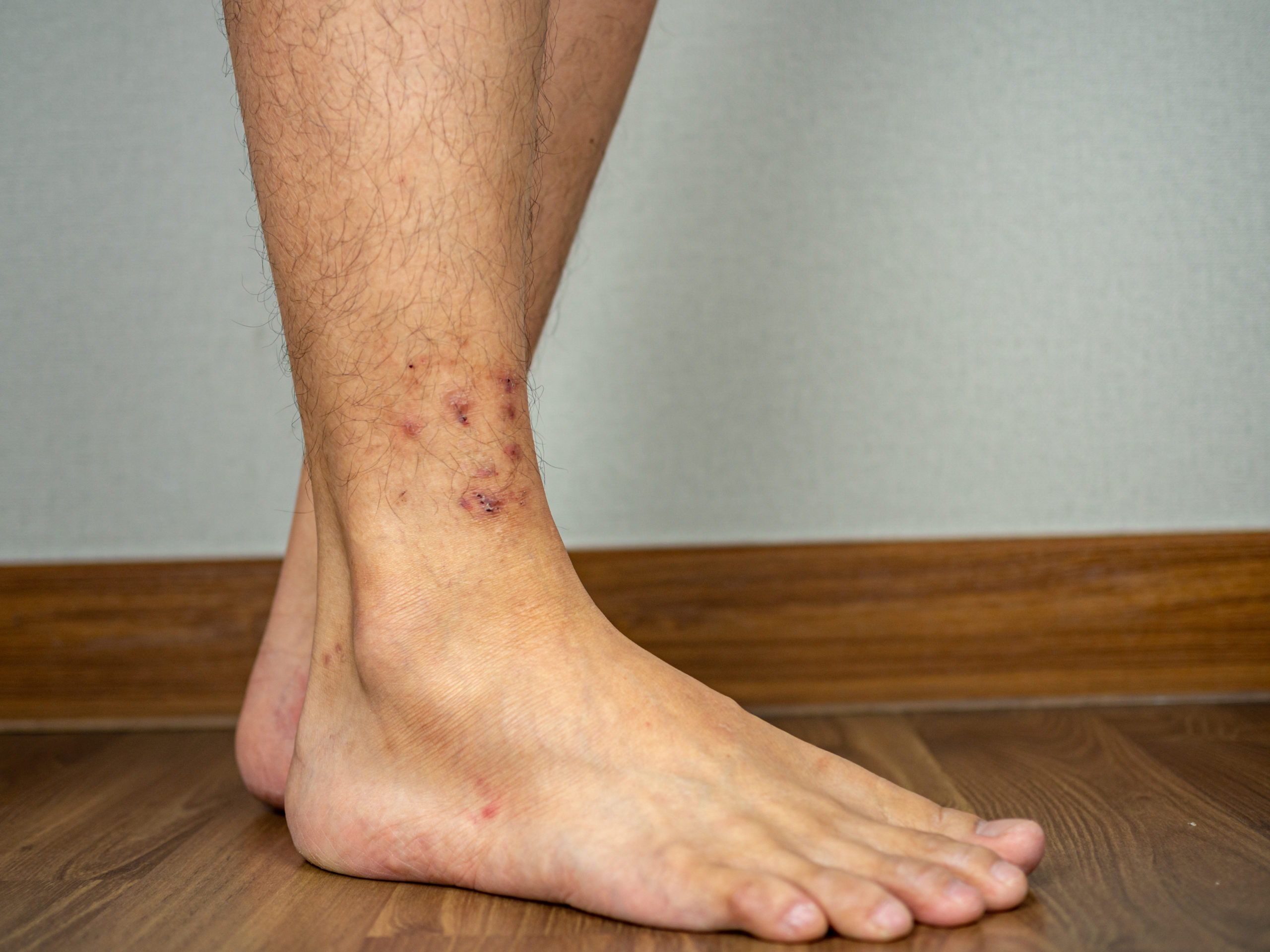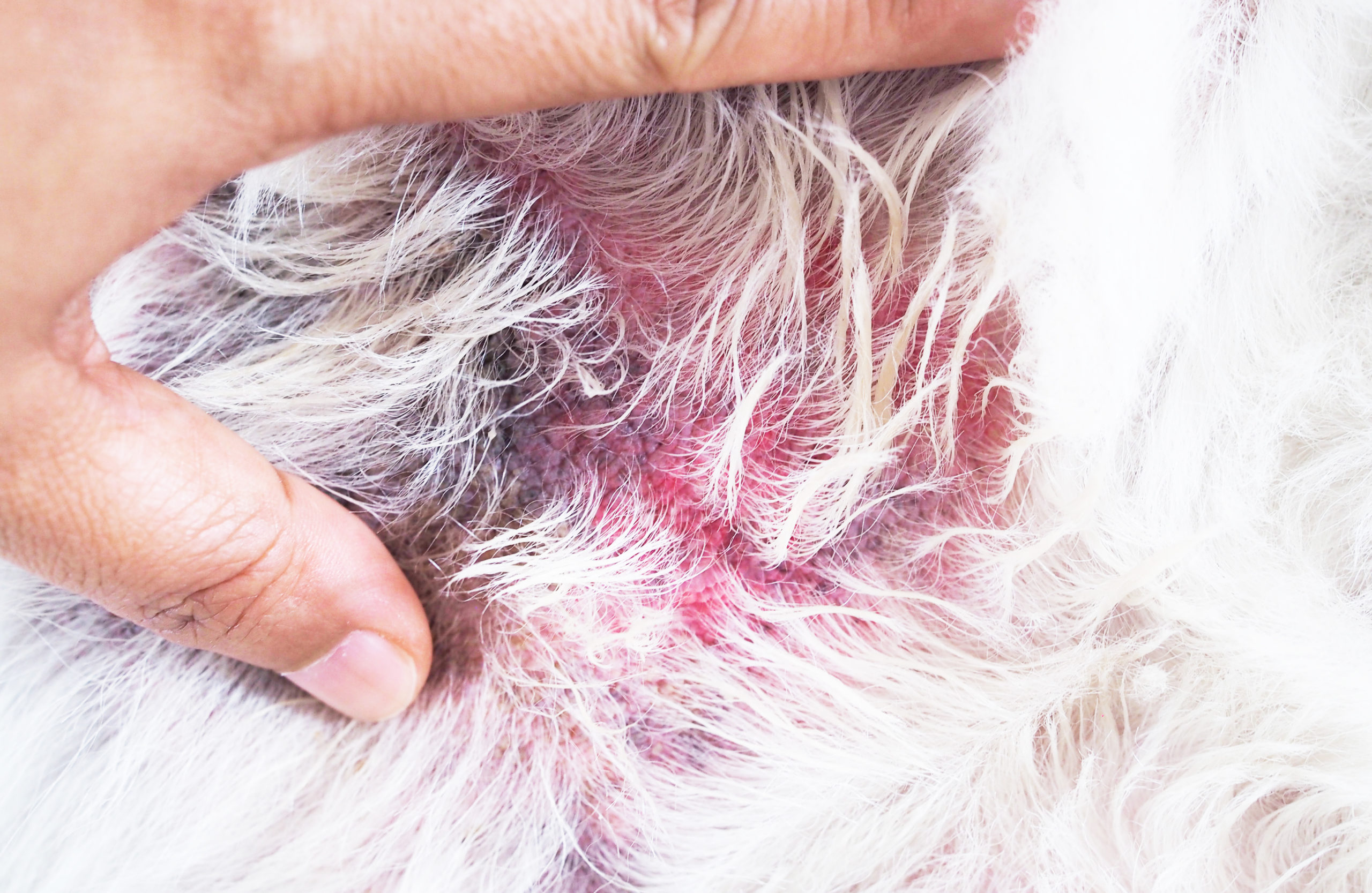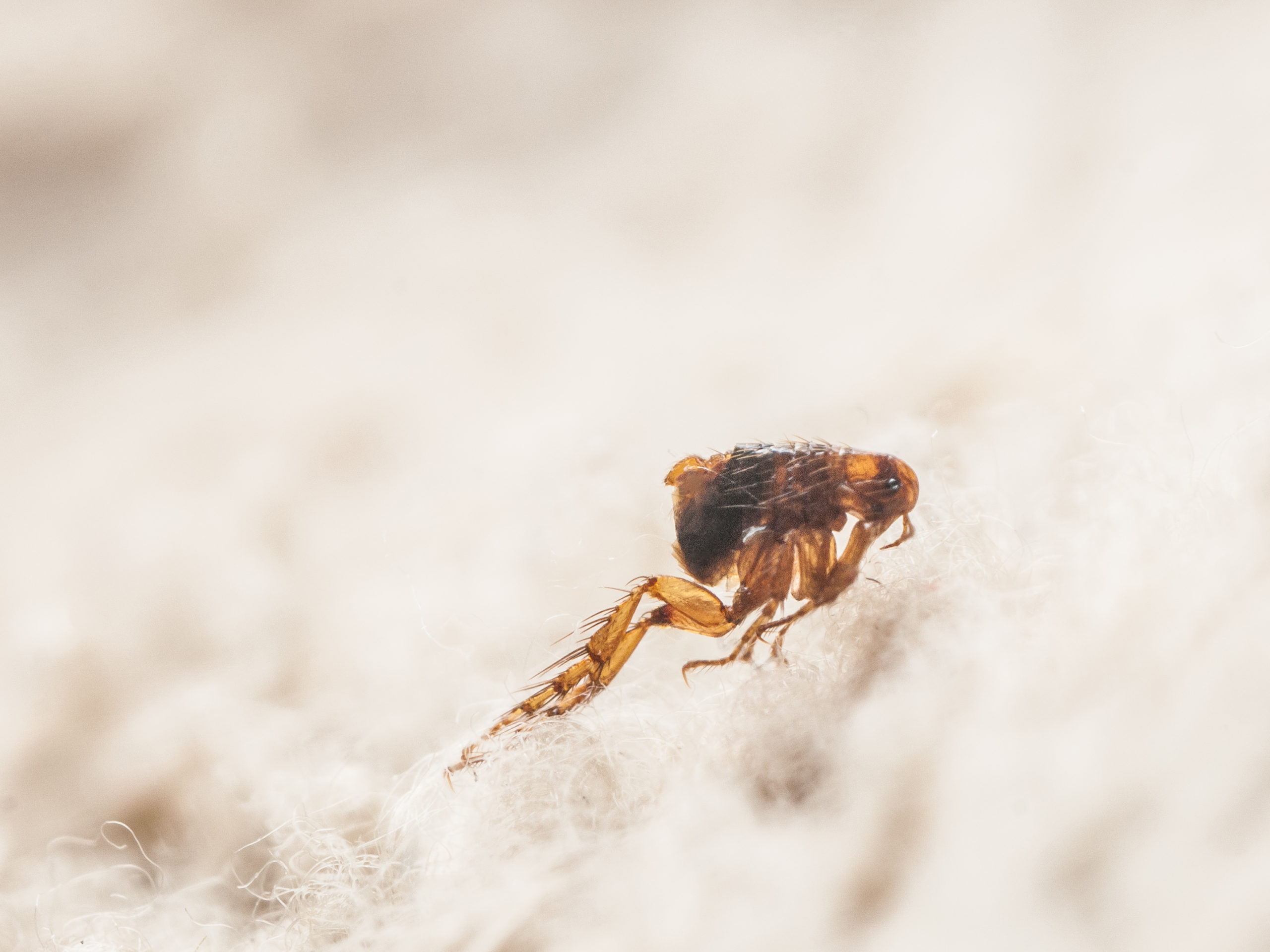8 Signs of a Flea Infestation
8 Signs of a Flea Infestation
1. Itching and Scratching
Fleas constantly bite their victims, leading to an insanely itchy sensation. As fleas primarily target our furry friends, if fido or fluffy are starting to itch themselves constantly, this can be a sign of fleas.

2. Ankle Bites
When fleas target people, they will often bite us around the ankles. Finding small itchy red bites marks in this area can be indicative of a flea problem. However, it is important to note that this is also a commonly targeted area by bed bugs, so it is not a sure-fire sign of fleas.

3. Bites on Your Arms
The most common way that fleas get into your home is on pets and the most common species of fleas that is the Ctenocephalides felis, or the “cat flea,” though, this is a bit of a misnomer as these fleas target dogs more often than cats. Due to this, they are most likely to be on or around your furry friends in your home. So, when you come into contact with the fleas, it can often be due to hugging, cuddling, petting, or holding your furry family members, leading to bites on your arms.

4. Pale Gums, Lethargy, Labored Breathing, etc.
In severe cases, flea infestations can lead to a condition in pests called anemia. This condition is caused by a lack in healthy red blood cells within the body and is due to the fleas sucking the blood of the victim. Symptoms of anemia include increased lethargy, pale gums, labored and/or rapid breathing, and weakness. If you recognize these signs in your pet, immediate medical intervention is required. If left untreated, this flea-induced condition can unfortunately even lead to death.

5. Restless Pets
Having tiny parasites climbing around on your skin, being constantly bitten, and having your skin constantly itch would drive anyone insane, even your pets. If they seem agitated and restless, this is clearly a sign that something is wrong, and fleas are one possibility behind such behavior.

6. Combing – Fleas and Flea Dirt
When brushing/combing your pet, observe both the collected fur and the brushing implement for signs of fleas. This could be seeing the physical fleas themselves as small, reddish-brown spots, or finding flea dirt… aka flea feces. These will appear to be small black specs but, when introduced to a droplet of water and smeared with a rag, will turn red because of the flea’s consuming blood as they bite their victims.

7. Rashes
When fleas bite, their saliva is injected into the dermis of their victims which can cause several problems for dogs and cats. The most common reaction is an immune response called flea allergy dermatitis (FAD), which results in intense itchiness and skin irritation/redness/rashes. Oddly enough, fleas target different areas on different animals so when examining your furry friends for signs of FAD you will want to check different areas. On dogs, bite marks and rashes are most likely to be on their hind quarters, while on cats, it is most likely to be on their heads and necks.

8. Seeing Fleas
Of course, one of the clearest signs that you have a flea infestation is seeing the fleas themselves jumping around. Some of the places that you are most likely to find fleas are on couches, pet bedding, rugs, and carpets.

Citations
Anemia (no date) Mayo Clinic. Mayo Foundation for Medical Education and Research. Available at: https://www.mayoclinic.org/diseases-conditions/anemia/symptoms-causes/syc-20351360 (Accessed: September 2020).
Fleaborne Diseases of the United States (2020) Centers for Disease Control and Prevention. U.S. Department of Health and Human Services. Available at: https://www.cdc.gov/fleas/diseases.html (Accessed: September 2020).
The Hidden Dangers of Flea Bites: What to Look For (no date) The Associated Press. Seresto. Available at: https://apnews.com/sponsored/?prx_t=z40EAq48yAniAPA&prx_ro=s&ntv_fpc=671dc30c-79c6-4e77-b41f-040c722e9642&ntv_fr (Accessed: September 2020).
Hill, C. and MacDonald, J. (2008) Fleas, Purdue University . Purdue’s College of Agriculture: Entomology Department. Available at: https://extension.entm.purdue.edu/publichealth/insects/flea.html (Accessed: September 2020).
Holland, K. (2017) Everything You Need to Know About Fleabites, Healthline. Available at: https://www.healthline.com/health/flea-bites#TOC_TITLE_HDR_1 (Accessed: June 2020).
Pest Control Technology (2021) “The Pest: Always Looking for an ‘In’,” July, pp. 30–30.
Prevention and Control: Fleas (N/A) Illinois Department of Public Health. The Division of Environmental Health. Available at: http://www.idph.state.il.us/envhealth/pcfleas.htm (Accessed: May 2020).

